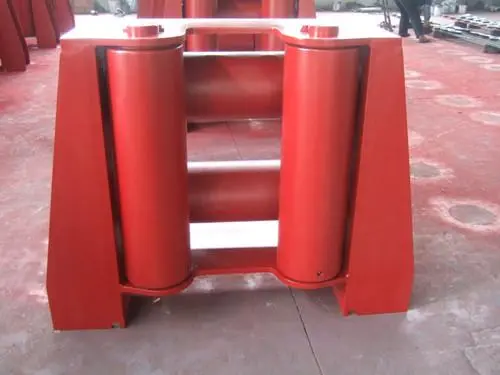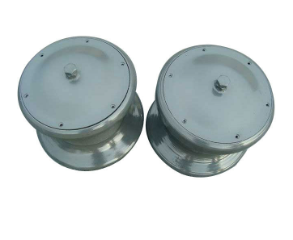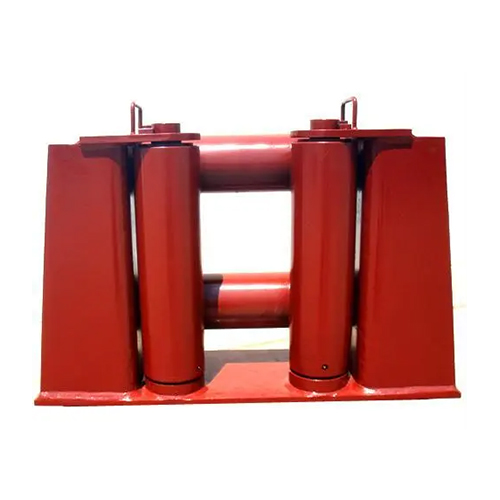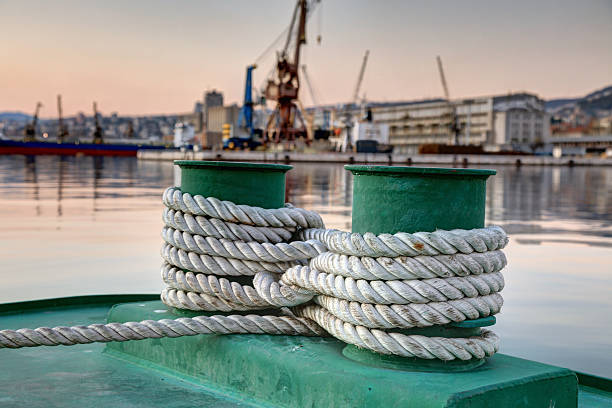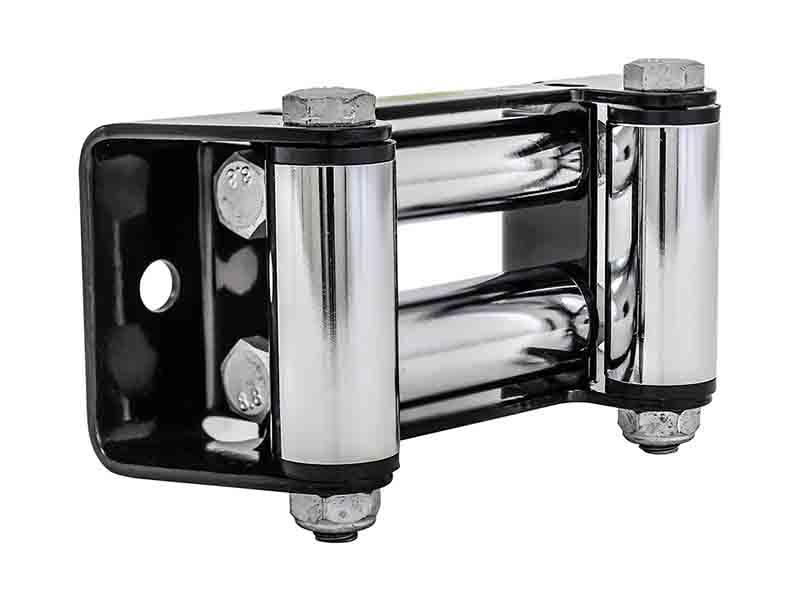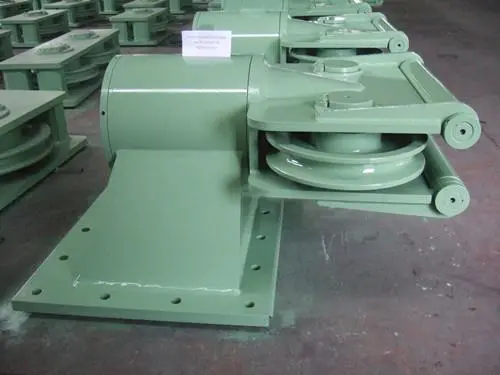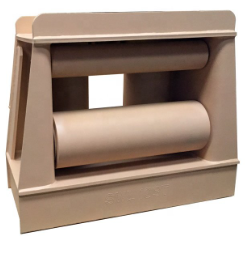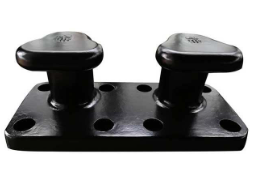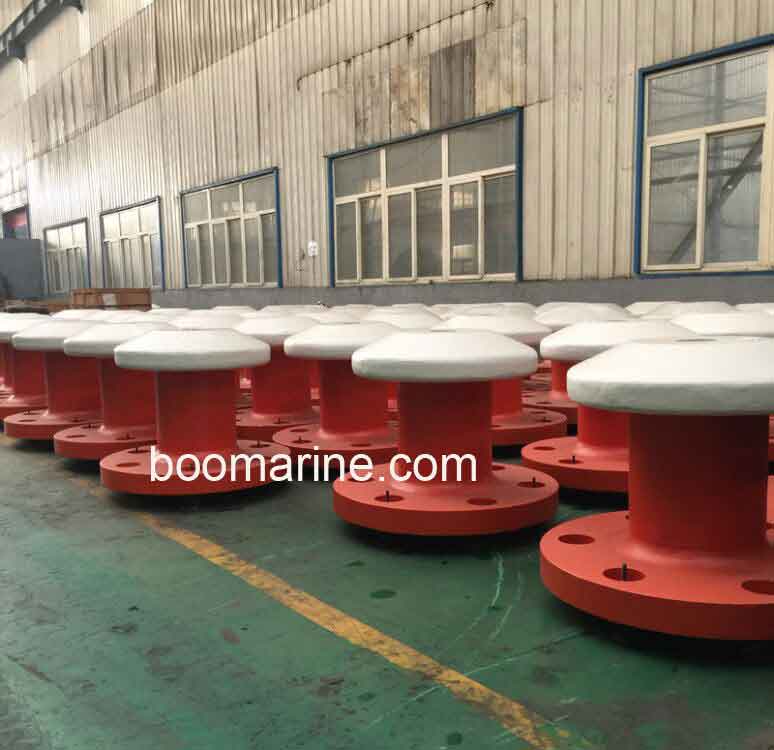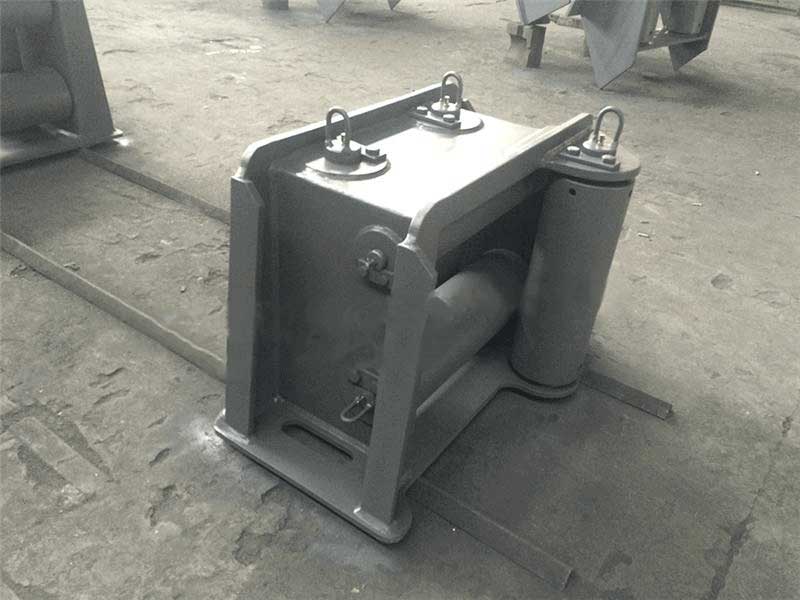Table of Contents
Roller fairleads are installed on the round-shaped base of the ship deck between the fairlead and winch used to change the direction of mooring ropes and help lead the ropes to the reel. However, roller fairleads like any other mechanical component, can develop issues over time. These issues can not only impede performance but also pose a safety risk. Boomarine will introduce the common problems and causes associated with mooring roller fairleads. It equips you with the knowledge to assess the condition of your fairlead and determine whether it requires repair or replacement. Additionally, the article outlines essential maintenance tips to ensure your roller fairlead’s longevity and optimal performance.
DIN81902 Roller Fairlead
Common Problems and Causes of Roller Fairlead
| Common Problem | Cause | Preventive Measures |
| Roller Wear and Damage | Prolonged contact with mooring ropes can cause roller wear or damage, increasing maintenance costs and reducing the fairlead’s lifespan. | Regularly inspect rollers for signs of wear or damage. Rollers that are worn or damaged should be replaced as soon as possible. |
| Roller Seizing | Dirt, debris, or insufficient lubrication can cause rollers to seize or slow down. | Rollers should be cleaned and lubricated on a regular basis, as recommended by the manufacturer. |
| Mooring Ropes Slippage | Mooring ropes may slip during operation if fairleads are not designed or maintained properly. This could be due to an incorrect roller size or uneven roller surfaces. | Choosing a fairlead with the right roller size for your mooring rope diameter. Ensure that roller surfaces are smooth and even. |
| Structural Fatigue | Repeated load cycles can fatigue the metal components of the fairlead, resulting in cracks or failure. | Avoiding excessive loads and using the fairlead at its rated capacity. Regularly inspect for signs of fatigue cracks. |
| Corrosion Issues | Exposure to saltwater or other corrosive substances can cause metal parts to corrode, particularly in harsh marine environments. | To remove corrosive elements from the fairlead, clean and rinse it on a regular basis with fresh water. Applying protective coatings or utilizing corrosion-resistant materials. |
| Improper Installation | Incorrect alignment or fastening during installation can cause the fairlead to shift or vibrate during operation, compromising performance. | Follow the manufacturer’s installation instructions carefully. Ensure that all mounting hardware is properly tightened. |
| Insufficient Maintenance | Regular inspection and maintenance are critical for ensuring the fairlead’s peak performance. Lack of proper maintenance can hasten the onset of the aforementioned issues. | Setting up a regular maintenance schedule, which includes inspection, cleaning, lubrication, and replacement of worn parts. |
By implementing these preventive measures and following proper maintenance practices, you can effectively reduce the occurrence of common mooring roller fairlead problems, extending their operational lifespan.
JIS F2014 Warping Roller Fairlead
Assessing the Need for Roller Fairlead Repair or Replacement
1. Visual Inspection
- Thorough Examination: Begin by visually inspecting the mooring roller fairlead for any cracks, deformation, rust, or excessive wear. The rolling surface should be smooth and free of any visible irregularities.
- Roller Condition: Check the rollers for cracks, dents, or excessive wear. The rollers should move smoothly, with no signs of seizing or binding.
- Mounting Hardware: Inspect mounting hardware, such as bolts, screws, and brackets, for damage or loosening. Ensure that all connections are secure and properly tightened.
2. Functional Testing
- Manual Rotation: Manually rotate the rollers to check for movement and identify any unusual noises or signs of binding. The rollers should rotate freely with minimal friction or resistance.
- Cable Guidance: Examine the fairlead’s ability to guide the cable smoothly. If the cable moves excessively or appears to slip, it may indicate a problem with the fairlead’s alignment or roller condition.
- Load Testing: If possible, run a load test with a low load to assess the fairlead’s overall performance under tension. Look for any signs of excessive strain, deformation, or unusual behavior.
3. Structural Integrity Assessment
- Frame Inspection: If the fairlead has a mounting frame, check it for signs of bending, cracks, or structural damage. Ensure that the frame is securely attached to the mounting surface.
- Connection Points: Inspect all connection points, including weld joints, rivets, and mounting brackets, for signs of wear, cracking, or loosening. Ensure that all connections are secure and structurally sound.
4. Performance Monitoring
- Real-World Observation: Examine the fairlead’s performance during actual use, paying special attention to how well it guides the cable and whether there are any instances of slipping or erratic behavior.
- Mooring Ropes Condition: Inspect the mooring ropes for signs of excessive wear or damage, especially where they make contact with the fairlead rollers. Worn or damaged ropes can indicate an issue with the fairlead’s alignment or roller condition.
5. Safety Check
- Safety Standards Compliance: Check that the fairlead complies with applicable safety standards and industry regulations. Check that there are no exposed hazards or potential pinch points that could pose a safety risk.
- Damage Evaluation: Evaluate damage and safety implications. If the damage threatens the fairlead’s structural integrity or impairs its ability to safely guide the ropes, immediate repair or replacement is required.
6. Maintenance Record Review
- Usage History: Examine the fairlead’s maintenance records to trace its usage history and estimate its age. Consider the recommended maintenance intervals and the fairlead’s expected lifetime.
- Maintenance Compliance: Ensure fairleads are regularly maintained and follow manufacturer recommendations. Timely maintenance can help to extend the fairlead’s life and prevent early failure.
7. Professional Assessment
- Complex Damage: If the fairlead has complex damage or the extent of deterioration is difficult to determine, consult a qualified technician or professional. They can provide a more detailed diagnosis and suggest appropriate repair or replacement options.
Repair or Replacement Decision of Roller Fairlead
Based on the results of these inspections and assessments, a decision can be made as to whether the roller fairlead needs repair or replacement.
- Repair: If the damage is minor and repairable, consider replacing worn or damaged parts while adhering to manufacturer specifications and industry standards.
- Replacement: To ensure optimal performance and safety, consider replacing the entire unit if the fairlead has sustained significant damage or has reached the end of its expected lifespan. Whether you need vertical guide sheave or NS2585 warping roller fairlead and so on, you can choose the professional roller fairlead supplier Yushuo as your partner for high-quality products.
4 Rollers Fairlead Type BB
The Importance of Regular Maintenance for Your Mooring Roller Fairlead
Understanding the potential issues that can plague your mooring roller fairleads and implementing proper maintenance practices will allow you to address them proactively and extend its life. Maintaining your roller fair lead requires regular inspections and cleaning, as well as lubrication and corrosion protection, and is an investment that pays off in terms of safety, dependability, and cost-effectiveness. The well-maintained roller fairleads method given by Boomarine keeps your mooring ropes running smoothly and your operations running efficiently.

